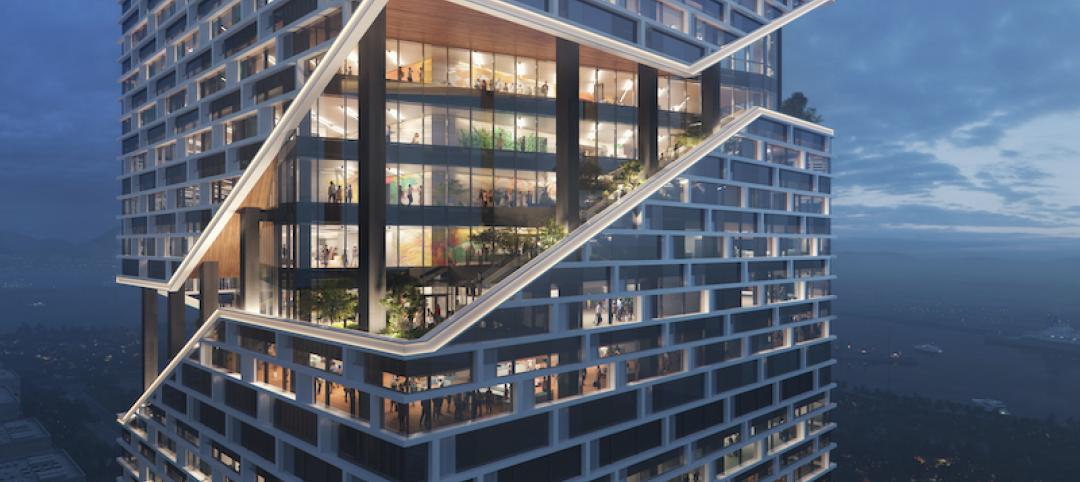In the $90 billion U.S. office construction sector, Class A and Class A+ properties are the darlings of every major metro market. Owners and developers of these amenity-rich, high-performance buildings are competing to lure top-notch companies willing to pay the most lucrative lease rates—and to keep them there long-term.
There’s certainly plenty of money to be made in building and rehabbing Class A office buildings. But what about their less-flashy counterparts, Class B and Class C properties?
A new Urban Land Institute report, researched in partnership with the Rocky Mountain Institute and the Building Owners and Managers Association (BOMA), suggests that there is significant “hidden value” waiting to be unlocked by owners of Class B/C properties—and plenty of work for AEC firms that cater to these segments of the office market.
For myriad reasons, these properties are woefully outdated and in serious need of a tune-up to meet baseline energy efficiency standards. The ULI report found that even the simplest of energy efficiency measures—low- and no-cost tactics such as upgrading general office illumination to LED fixtures, optimizing HVAC schedules and setpoints, performing routine preventative maintenance, and engaging tenants in occupant behavior measures—could net an immediate 15% savings in energy costs.
Larger capital investments—such as improvements to the building envelope and roof system, or installation of high-efficiency building systems, sensors/controls, or solar panels—could slash energy use by 35% or more, with paybacks in the three-year range. “That can reduce a property’s operating expenses by $0.26 to $0.61 per square foot, increase net operating income by 1.9% to 4.3%, and boost property value by approximately $4 to $8 per square foot,” said the authors.
Why haven’t more Class B/C property owners taken steps to improve the energy performance of their buildings? The report pinpoints three primary reasons: limited working capital to pay for project costs, inadequate staff capacity to implement these measures, and a lack of priority versus other business activities.
Furthermore, by successfully instituting a green lease program, owners can recoup a sizable portion of the initial investment, which would further improve the financial outcomes for the property.
If all of this is so elementary, as the report outlines, why haven’t more Class B/C property owners taken steps to improve the energy performance of their buildings? The report pinpoints three primary reasons: limited working capital to pay for project costs, inadequate staff capacity to implement these measures, and a lack of priority versus other business activities.
“Staff working at Class B/C buildings wear multiple hats. Rarely do they have dedicated third-party management or building engineering staff with time to focus on identifying, championing, and implementing energy efficiency efforts,” said the authors.
The report offers a roadmap for getting started.
For a free PDF download of the ULI report, “Unlocking Hidden Value in Class B/C Office Buildings,” visit BDCnetwork.com/ClassBC.
Related Stories
Coronavirus | Aug 25, 2020
Video: 5 building sectors to watch amid COVID-19
RCLCO's Brad Hunter reveals the winners and non-winners of the U.S. real estate market during the coronavirus pandemic.
Coronavirus | Jul 20, 2020
Student housing amid the pandemic, infection control in buildings, and future airport design on "The Weekly"
Experts from Core Spaces, Bala Consulting Engineers, and Populous were interviewed in the July 23 streaming program from Horizon TV.
Coronavirus | Jul 10, 2020
HOK, Cushman & Wakefield, and HMC Architects hold sway on July 16 "The Weekly"
“The Weekly,” a new streaming program for the commercial design and construction industry, to feature experts from HOK, Cushman & Wakefield, and HMC Architects. Tune in July 16 for insight on social media and interior design, the future of the workplace, and healthcare design after COVID-19.
Office Buildings | Jul 9, 2020
Sydney will be home to the world’s tallest hybrid timber tower
SHoP Architects, in collaboration with BVN, is designing the project.
Office Buildings | Jun 25, 2020
New HQ for Chinese tech supplier will feature gardens on every floor
NBBJ’s spiral design maximizes worker exposure to the green spaces.
Coronavirus | Jun 12, 2020
BD+C launches 'The Weekly,' a streaming program for the design and construction industry
The first episode, now available on demand, features experts from Robins & Morton, Gensler, and FMI on the current state of the AEC market.
Office Buildings | Jun 1, 2020
Luxembourg office complex breaks ground in Belval
Foster + Partners designed the building.
Office Buildings | May 27, 2020
512 West 22nd Street: Biophilic design on the High Line
COOKFOX Architects designed the project.
Coronavirus | May 18, 2020
Infection control in office buildings: Preparing for re-occupancy amid the coronavirus
Making workplaces safer will require behavioral resolve nudged by design.
















